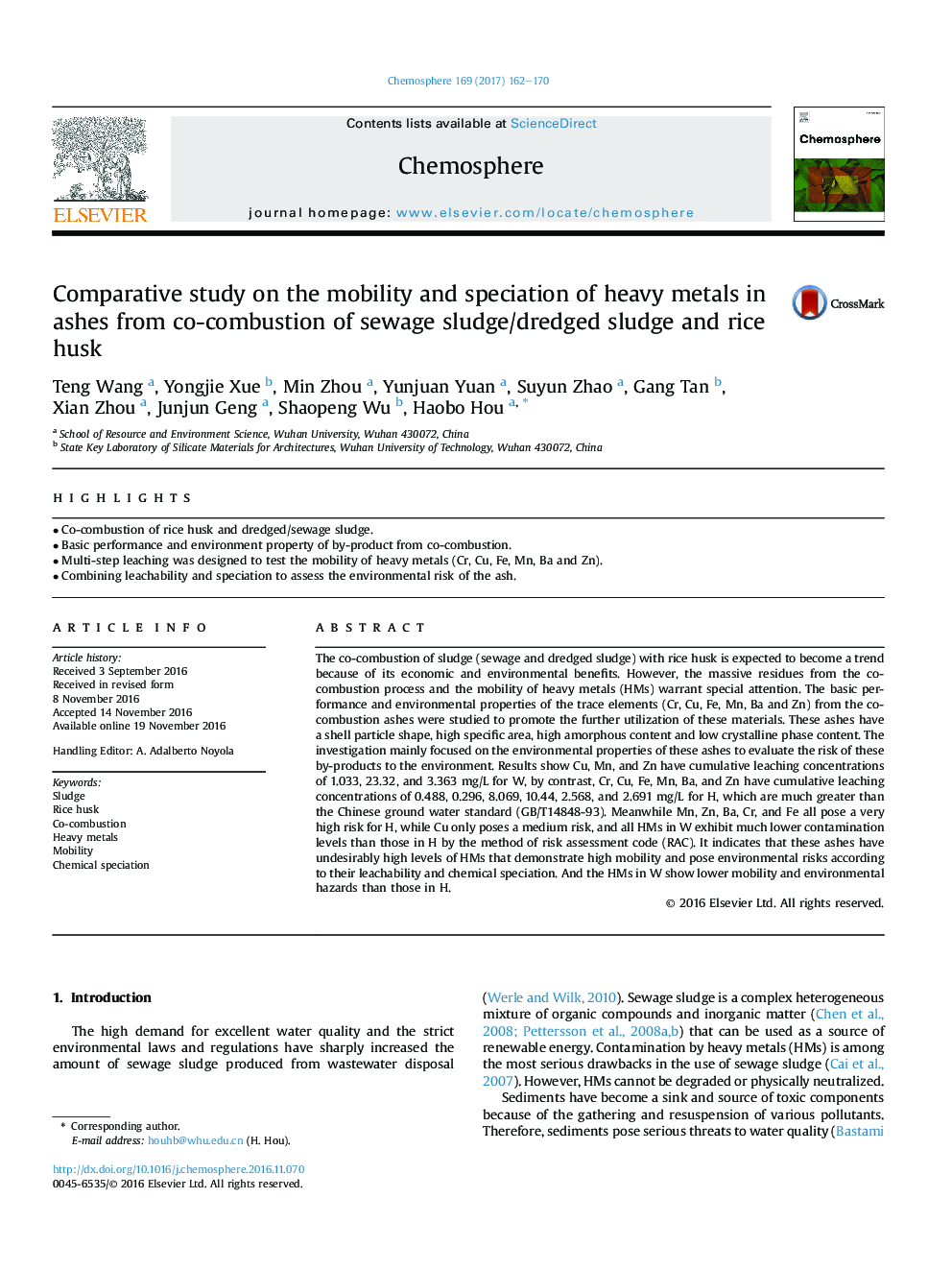| کد مقاله | کد نشریه | سال انتشار | مقاله انگلیسی | نسخه تمام متن |
|---|---|---|---|---|
| 5747008 | 1618802 | 2017 | 9 صفحه PDF | دانلود رایگان |
- Co-combustion of rice husk and dredged/sewage sludge.
- Basic performance and environment property of by-product from co-combustion.
- Multi-step leaching was designed to test the mobility of heavy metals (Cr, Cu, Fe, Mn, Ba and Zn).
- Combining leachability and speciation to assess the environmental risk of the ash.
The co-combustion of sludge (sewage and dredged sludge) with rice husk is expected to become a trend because of its economic and environmental benefits. However, the massive residues from the co-combustion process and the mobility of heavy metals (HMs) warrant special attention. The basic performance and environmental properties of the trace elements (Cr, Cu, Fe, Mn, Ba and Zn) from the co-combustion ashes were studied to promote the further utilization of these materials. These ashes have a shell particle shape, high specific area, high amorphous content and low crystalline phase content. The investigation mainly focused on the environmental properties of these ashes to evaluate the risk of these by-products to the environment. Results show Cu, Mn, and Zn have cumulative leaching concentrations of 1.033, 23.32, and 3.363Â mg/L for W, by contrast, Cr, Cu, Fe, Mn, Ba, and Zn have cumulative leaching concentrations of 0.488, 0.296, 8.069, 10.44, 2.568, and 2.691Â mg/L for H, which are much greater than the Chinese ground water standard (GB/T14848-93). Meanwhile Mn, Zn, Ba, Cr, and Fe all pose a very high risk for H, while Cu only poses a medium risk, and all HMs in W exhibit much lower contamination levels than those in H by the method of risk assessment code (RAC). It indicates that these ashes have undesirably high levels of HMs that demonstrate high mobility and pose environmental risks according to their leachability and chemical speciation. And the HMs in W show lower mobility and environmental hazards than those in H.
Journal: Chemosphere - Volume 169, February 2017, Pages 162-170
